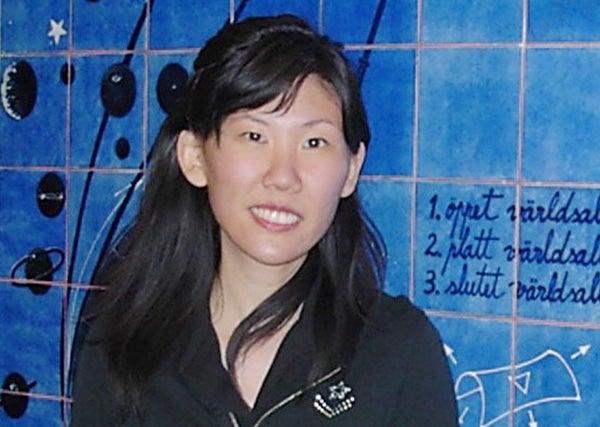Mineral Physicist to Use NSF Grant to Fuel Earthy Research, Educational Outreach
Wendy Li-Wen Mao, a mineral physicist at SLAC and Stanford, says scientists have speculated about various ways the Earth’s iron-rich core and its rocky mantle separate and interact.
By Diane Rezendes
Wendy Li-Wen Mao, a mineral physicist at SLAC and Stanford, says scientists have speculated about various ways the Earth’s iron-rich core and its rocky mantle separate and interact. But until now, it’s been difficult to conduct relevant experiments to study these interactions at the conditions existing in our planet’s deep interior.
Mao was able to get beam time at SLAC’s Stanford Synchrotron Radiation Lightsource, as well as critical collaborations with SLAC scientists, which allowed her to conduct preliminary experiments that were key to demonstrating the feasibility of her project.
The specialized experiment technique, known as X-ray computed tomography, lends itself to creating images down to a nanoscale resolution. With this powerful, non-destructive 3-D probe and a diamond anvil cell, various molten iron and solid silicate minerals – just like those found in the Earth’s core and mantle, respectively – are subjected to extremes in temperature and pressure, just as they are within Earth itself.
Seeing how they behave at high pressure, Mao hopes to shed light on how the Earth’s core formed and separated from the mantle .
Now, thanks to a Faculty Early Career Development award from the National Science Foundation (NSF), Mao will have the funding she needs to push her research forward. The five-year, $291,000 grant will enable her to support a graduate student to assist her with the research.
NSF makes the awards to scholars who, as the foundation puts it, “most effectively integrate research and education within … their organization.” By making the awards early in a recipient’s career, the foundation hopes to foster a lifelong career in research and education.
The grant requires an education-outreach component, which is just fine with Mao, who is an educator as much as a scientist. She plans to work with middle-school girls. It’s a critical time for young girls to develop an interest in science, she says: “With older kids, it’s harder to pull them into science. They already have the idea in their mind that ‘I’m not good at science.’”
Mao will collaborate with Lisa Hjelm, a geologist and teacher at the Girls’ Middle School in Palo Alto. The two will design a geology activity for fall 2012, likely using some of the images already captured. “Sixth grade is an opportune time to invest,” Mao said. “I want to get the girls to feel that (science) is fun and useful, and not be intimidated by it.”

(Photo courtesy of Wendy Mao)